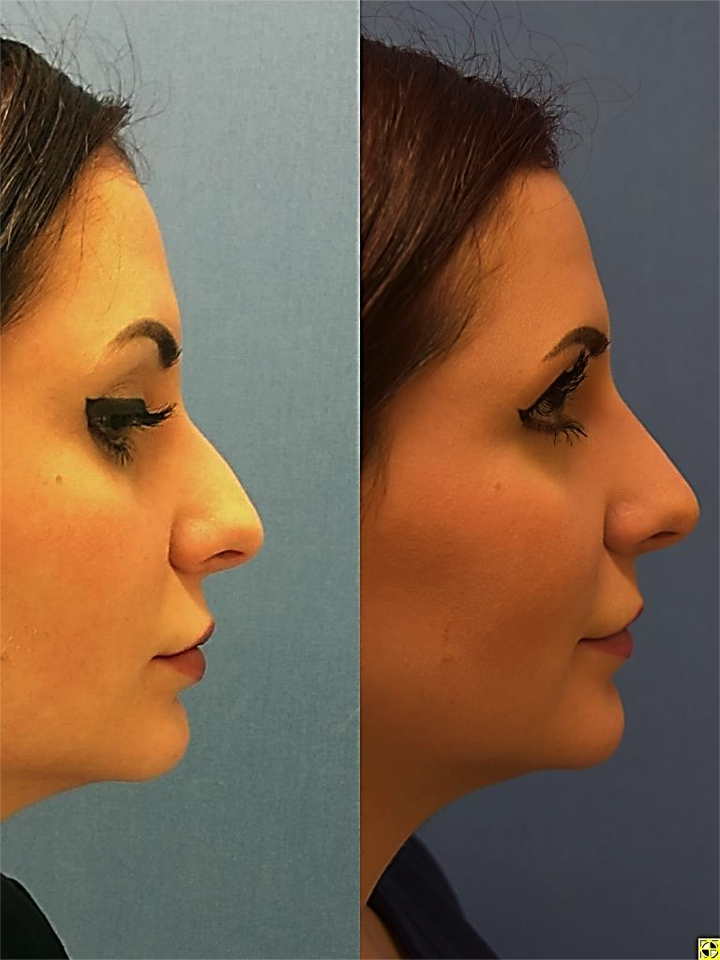What is the Liquid Rhinoplasty?
Liquid Rhinoplasty, the Non-Surgical Rhinoplasty
Many patients ask what is a “non-surgical rhinoplasty”. This procedure is commonly performed in our practice to treat minor to moderate concerns of the nose. The benefit of the non-surgical rhinoplasty is the short downtime in the setting of a relatively painless procedure. The downsides of this technique are the inability to correct all concerns of the nose and the fact that the correction from non-surgical rhinoplasty is not permanent.
What can a liquid rhinoplasty treat?
The liquid rhinoplasty is best suited to treat minor dorsal humps and asymmetry of the nasal tip. It will not provide correction of severe dorsal humps. We have used this technique to treat nasal fracture deformities and deformities following prior rhinoplasty.
How is the procedure performed?
Any patient interested in a liquid rhinoplasty will first present for a consultation. If the concern is felt treatable by filler alone then the following will occur: Topical lidocaine will be placed on the nose for approximately 10 minutes. Following this, the area of concern is treated with small amounts of filler, this is typically done from the top of the nose down to the tip of the nose. Either Restylane – L or Juvederm is typically used. At the end of the procedure, you will be asked to stay for observation for 10 minutes to ensure there are no issues that need to be addressed.
You will be asked to return to the office in two weeks for a second touch up procedure where small amounts of filler may be added to address any slight deficiencies.
You will likely need to return for treatment in approximately 1 to 2 years. The exact duration of correction is not completely predictable and each patient will vary.
Will the procedure make my nose look bigger?
Placing filler in any area by definition makes that area more full and, therefore bigger. However, when done appropriately in the correct patient the improvement in contour far outweighs any minor enlargement of the nose.
What are the risks?
Risks of this procedure include bruising, bleeding, infection of the filler, need to dissolve the filler and injury to the skin over the nose. People who have had prior rhinoplasties are at increased risk for these complications. Patients should avoid sunglasses and pressure on the site for approximately 2 weeks.
What is the cost?
The cost ranges from 900 – 1200 dollars depending on the area to be treated.






